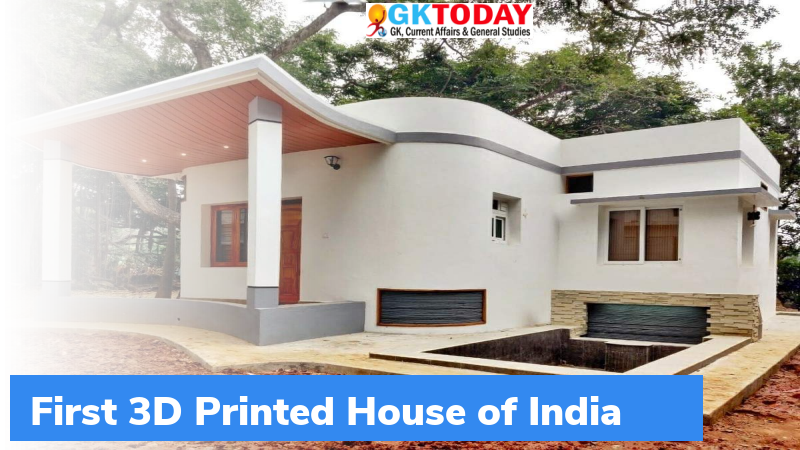India’s first 3D printed house at IIT-M
The Union Finance Minister Smt Nirmala Sitaraman inaugurated the first 3D printed house at IIT Madras.
About the House
- The House was constructed using indigenous 3D printing technology.
- It was built in just five days.
- It was built by TVASTA Manufacturing solutions based on a concept by former IIT-M students.
What is 3D printing?
- 3D printing is a process of making three dimensional objects through digital instructions. It is also called Additive manufacturing. It is the opposite of Subtractive Manufacturing. Subtractive Manufacturing is cutting away from a large material.
- The Global market of 3D printing is expected to reach 34.8 billion USD by 2024.
3D Printing in India
In 2020, the Ministry of Electronics and Information Technology released the National Strategy for Additive Manufacturing.
India holds only 1.4% of the global market share in Additive Manufacturing. Within ASEAN grouping, Singapore, Thailand and Malaysia account to about 80% of the Additive Manufacturing market.
National Strategy for Additive Manufacturing
The key goal is to position India as a global hub for additive manufacturing. It will address the following challenges in 3D printing in India:
- Fabrication speed
- Surface finish of contoured surfaces
- Data Formats
- Lack of Additive Manufacturing Standards
3D Printing in Construction
In the construction sector, it takes a lot of hard work to create a detailed, handmade and scaled product. With 3D printing the task becomes easier especially when complex geometries are involved. It can render detailed models in terms of colour and range of materials.
Types of Additive Manufacturing
According to the National Strategy of Additive Manufacturing, there are seven types of Additive Manufacturing processes. They are as follows:
- Vat Photopolymerization
- Binder Jetting
- Directed Energy Deposition
- Material Extrusion
- Material Jetting
- Powder Bed Fusion
- Sheet Lamination
Month: Current Affairs - April, 2021


